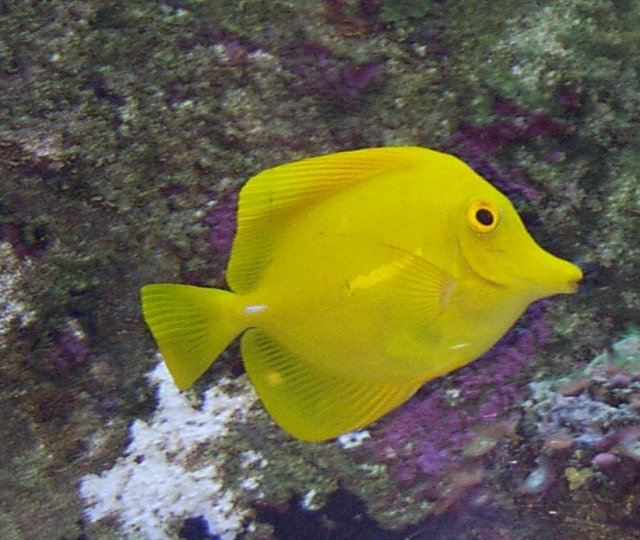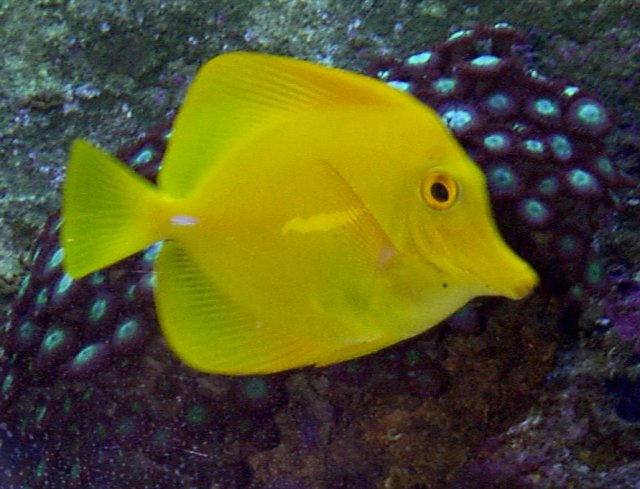Scientific name: Zebrasoma flavesenes
Range: Warm waters of the Pacific ocean
Habitat: Pacific plate, north of the equator from Japan to Hawaii at depths of 3 to 46 meters
Status: Not threatened
Diet in the wild: Herbivore, wild grasses, algae, and other plant life in general.
Diet in the zoo: Herbivore diet
Location in the zoo: James R. Record Aquarium


